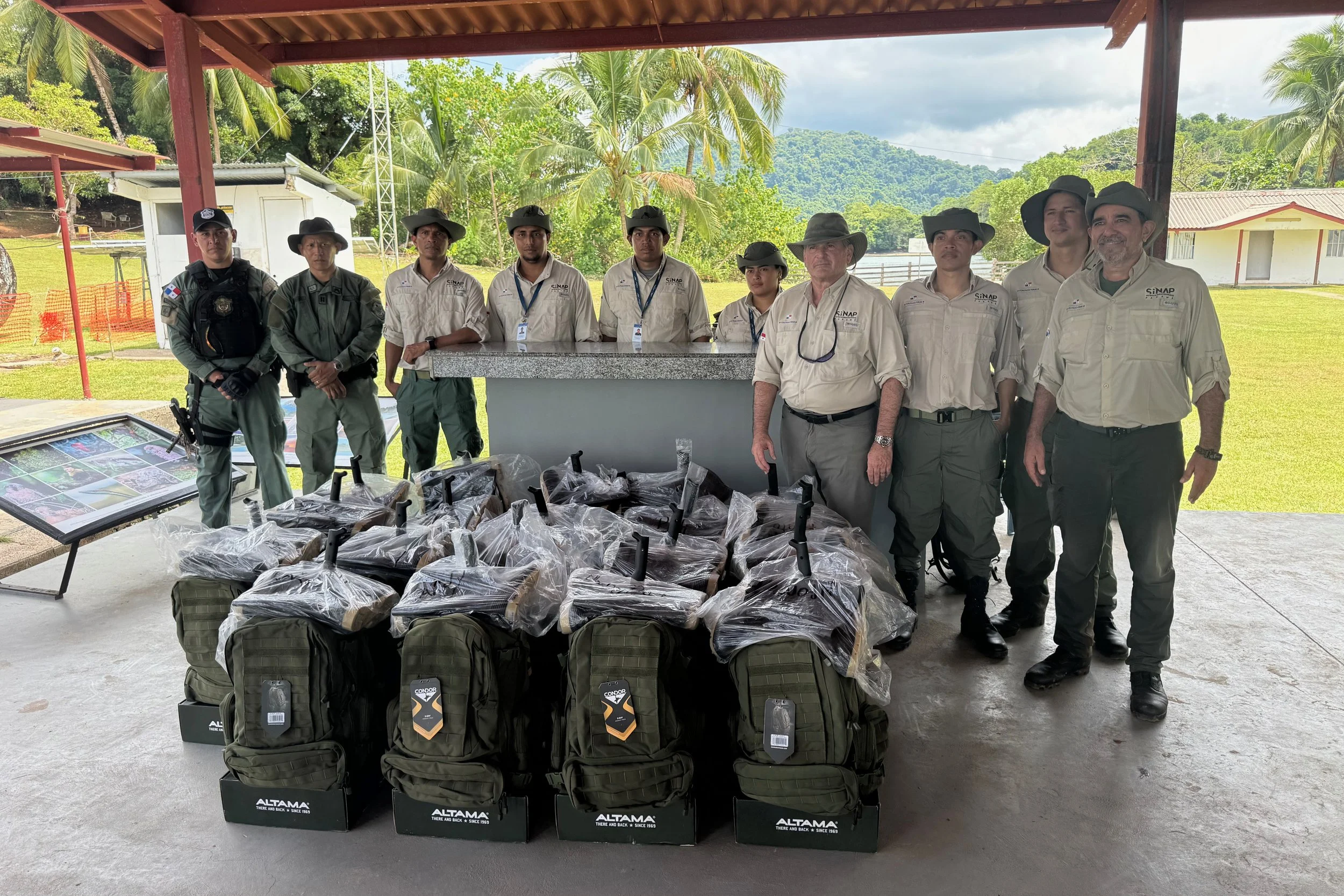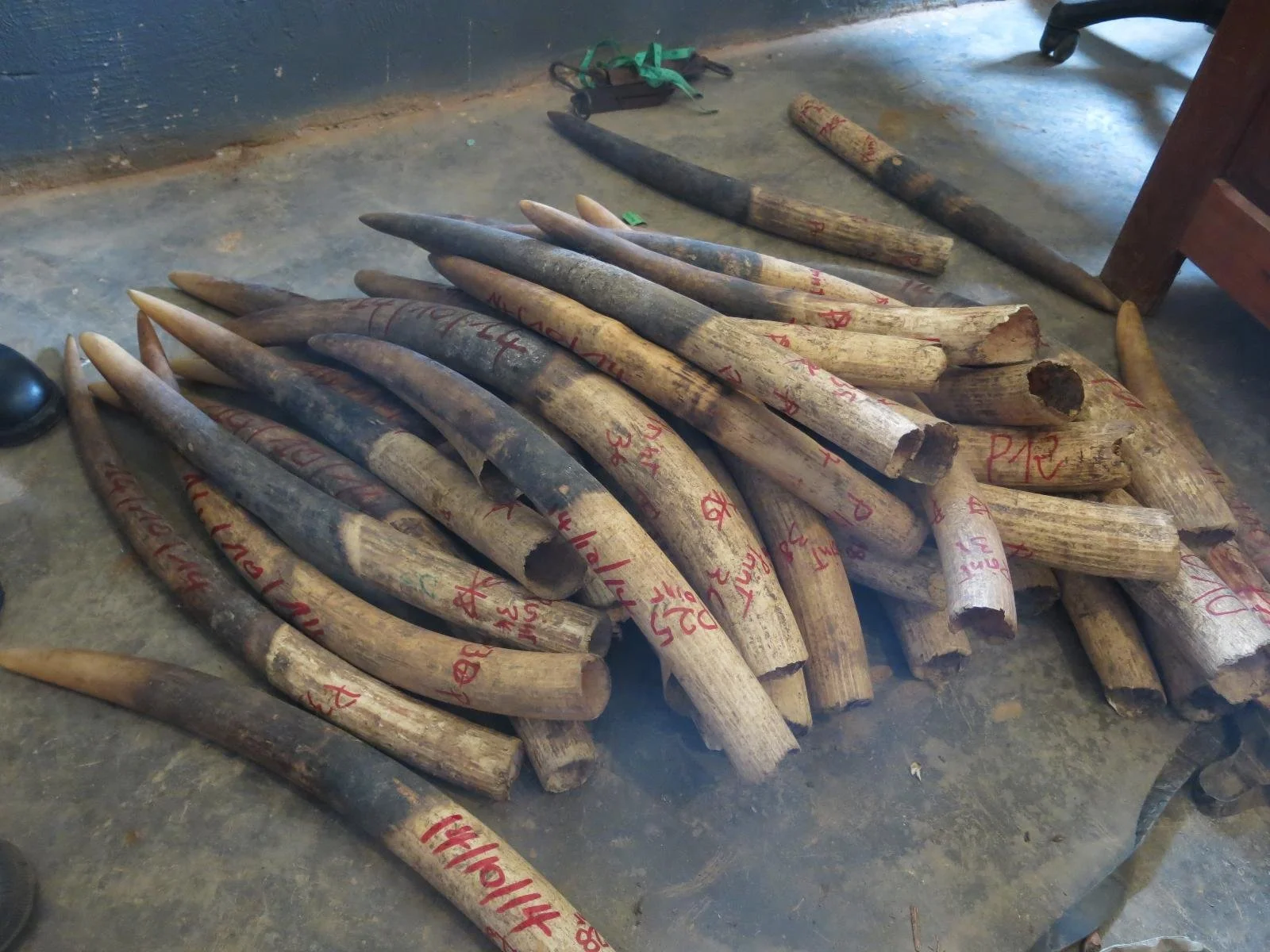-

GC Featured in The Guardian: A Success Story that Showcases the Reduction of Illegal Activities
-

The GC 2024-2025 Impact Report Now Available
-

LAST LANDS 2 with Bob Woodruff Out Now on Disney+ and HULU
-

Protecting the world’s wildest places through scaleable defense and community programs.
-

Deploying Global Park Defense and Community Protection for MPAs.
-

What makes GC completely unique to global park and native land protection?
-

Bringing the latest news from Endangered National Parks and Indigenous Territories around the world.
OUR MISSION
Global Conservation is the only international nature conservation group whose sole mission is the direct protection of endangered national parks and indigenous territories in developing countries.

This Holiday Season, Become a Champion for Nature
Gift a Donation Today to Help Support Protection for Our Last Wildlands

Bob Woodruff’s ‘Last Lands’ Season 2 Docuseries on the Harrowing
Fight to Protect Earth’s Threatened Ecosystems
The Emmy-nominated series and Webby Winner has a new season OUT NOW!
Once again featuring Bob Woodruff, the first two episodes will focus on Coiba National Marine Park in Panama and Mirador National Park in Mexico.


Low-cost tech and joined-up funding have reduced illegal logging, mining and poaching in the Darién Gap—it’s a success story that could stop deforestation worldwide
Global Conservation’s primary objective on land and sea is to protect the endangered marine ecosystems of the Baja Sur marine corridor from Loreto to East Cape (Boca del Álamo) by alleviating the pressures of illegal fishing, unregulated tourism, overfishing, and increasing marine traffic.
Packed with highlights of conservation successes from around the world at our project sites, this report features the effectiveness that the Global Park Defense and Community Engagement programs have for protecting culturally rich and highly biodiverse natural ecosystems in the most threatened parts of our world—land or sea.
Global Conservation is working to protect the Last 10% of Intact Primary Forests and Marine Ecosystems.
In 2025, Global Conservation made a tremendous impact towards our protection goals across 22 countries and over 20 million acres.
Global Conservation is working to secure permanent protection for Mirador National Park in Petén, Guatemala—the Heart of the Maya Biosphere and the Cradle of Maya Civilization.
Indonesia just inaugurated its first marine radar with the Governments of East Kalimantan and Berau to protect the Derawan Archipelago, Indonesia’s most important and biodiverse Marine Protected Areas (MPA).
Rangers from the Naso Kingdom spend days patrolling their forests to stop deforestation, which is penetrating the borders of their territory. Satellite monitoring and observing the terrain from high points helps them identify deforestation hotspots to visit on patrols. Global Conservation continues to support the community rangers in their efforts to protect this vast area of tropical rainforests in Panama.
Global Conservation forwards protection efforts throughout Peru in multiple parks while supporting native peoples through our Community Engagement program.
This inspiring event merged conservation leaders together with people who also share their passion for wildlife and habitat protection on a global scale! Live music from local band NOTORIOUS set the tone for a fun and thriving evening.
We are improving park and wildlife protection systems in Dja Faunal Reserve, Ngoryla and Nki National Parks in Cameroon, and Minkebe National Park in Gabon, as well as scaling Community Protection around the park's southeast and delivering training and equipment to provide real protection across a massive area of deep forests and jungles home to elephants, great apes, and many other endangered species.
Update: On October 31st, the President of the Congress of Guatemala and Congressman César Fion gave a formal recognition to the Genesis Elite Ranger Team and to me inside the Congress in Guatemala City.
GC has supported Forum Konservasi Leuser (FKL) for the past six years with eight FKL Wildlife Protection Teams who, in 2024-25, conducted 150+ patrol missions, covering 11,600 km over 2,680 days of patrolling dense, mountainous forests critical for the survival of the last Sumatran tigers (less than 400), rhinos (less than 80), elephants, and orangutans.
The Multiple Emmy®-Nominated Series, Hosted by Bob Woodruff and in partnership with Global Conservation, Explores Preservation Efforts in Guatemala’s El Mirador and Panama’s Coiba National Park
Global Conservation has been working in Ukraine for the past six years with four national parks, leading scientists, conservation planners, communities, and local NGOs, along with the Ministry of Environmental Protection and Natural Resources of Ukraine, to establish the largest new National Park in Europe, a stunning vision of hope for humans, forests, and wildlife in a war-torn country.
Coiba National Park, off the southwest coast of Panama, protects Coiba Island, 38 smaller islands, and the surrounding marine areas in the Gulf of Chiriqui. They are all part of the UNESCO World Heritage Coiba National Park and Special Zone of Marine Protection.
In a follow-up to Last Lands 1, which was a 2-Time Emmy Nominee, Season 2 is a two-part series focusing on Central America, including El Mirador in Guatemala and Coiba National Park in Panama. We at GC hope this series will inspire thousands of people to help Protect Our Planet.
Indigenous communities in the Peruvian Amazon are fusing tradition and technology to protect territory, assert rights, and respond faster than ever.
This documentary by award-winning photographer and filmmaker Joshua Asel explores the Ngorongoro Conservation Area in northern Tanzania, one of the world’s greatest reservoirs of large mammal biodiversity and a UNESCO World Heritage Site, while highlighting the delicate balance between wildlife, people, and land.
In a significant conservation victory, the entire assessment area of Great Koala National Park—176,000 hectares of state forests—will be added to the park. All logging within the Park’s boundary has ended completely.
This report summarizes key conservation efforts implemented by Global Conservation's Global Park Defense (GPD) in collaboration with SINAC across Costa Rica’s protected areas, in Corcovado National Park (PNC), during the first semester of 2025.
Latest GC News

Mouling National Park was established in 1982 with the objective of creating a favorable habitat for plants and animals. It is located on the right bank of the river Siang and is a reserved house for diverse flora and fauna. The vegetation of the area varies according to the altitude. The upper reaches are home to temperate alpine and coniferous forests, while tropical evergreen forests cover the lower area. Ornamental plants like foxtails and orchids are abundant in this area.
The Ngorongoro Conservation Area (8,292 km2) in northern Tanzania represents one of the world’s greatest and most important reservoirs of large mammal biodiversity, and also contains one of the most important paleoanthropological sites in the world.
Stretching over 160 kilometers along the coast of East Kalimantan Province, the Derawan Archipelago is among the most biologically rich and intact marine ecosystems in all of Indonesia. Maratua Island, one of Global Conservation’s focus areas, not only faces illegal fishing but also annual plastic islands washing onto its shores from the Philippines, Malaysia, and as far away as China.
High above the Caribbean coast of Colombia, where the land rises dramatically from the sea to nearly 5,700 meters, lies the Sierra Nevada de Santa Marta, a mountain range unparalleled in its ecological richness. This is the highest coastal range in the world, a sanctuary where glaciers gleam atop jagged peaks. This mountain range is more than just a hotspot for biodiversity; it is a spiritual heartland, a place the Kogui people call the "Heart of the World."
In the northwestern most stretches of the country of Georgia lies a sparsely populated region called Racha-Lechkhumi. There, Georgia has recently created a new national park, part of a broader initiative to expand Georgia's protected natural areas by 100,000 hectares. This protected area aims to safeguard local biodiversity, promote tourism, and create new jobs in the region.
In the heart of Nepal’s Terai, where golden grasslands meet shadowed forests, lie the wild sanctuaries of Bardiya and Banke National Parks. Here, the roar of the royal Bengal tiger echoes through the trees, and the mighty one-horned rhino treads ancient paths. These parks, spanning over 1,500 square kilometers, are lifelines for endangered species and vital corridors in the Western Terai Complex.
In the depths of the Yucatán Peninsula lies Calakmul Biosphere Reserve, a place where the wild heart of the Selva Maya pulses with life and history. This expansive park shelters ancient Maya ruins hidden beneath towering trees, and within its borders, jaguars roam freely, a rare glimpse into a world where nature and culture are inextricably linked.
As part of the Maya Biosphere Reserve, Calakmul is not just a sanctuary for biodiversity but a living narrative of resilience and balance. Here, conservation efforts meet the challenge of preserving one of Central America’s most vital ecosystems while supporting the communities that call this region home.
With its sprawling forests and meandering rivers, Cat Tien National Park, Vietnam is a natural wonderland that beckons both adventurers and conservationists alike. Among its inhabitants are iconic species facing the threat of extinction. The Asian elephant, a symbol of strength and wisdom, roams these ancient forests, its presence a testament to the rich biodiversity of this region. However, this fragile paradise faces unprecedented threats from human activities and environmental degradation.
This is the Heart of the Maya Biosphere and a UNESCO World Heritage site. Mirador National Park, a proposed 500,000-hectare protected area, contains the largest intact primary forest and wildlife habitat in Central America with over 40 major ancient Maya cities and interconnected causeways.
There's just one place left on earth where tigers, elephants, orangutans, and rhinos live together in the wild: the Leuser Ecosystem World Heritage Site on the Indonesian island of Sumatra.
Murchison Falls National Park is best known for the most powerful waterfall in the world, which roars with such intensity that the ground trembles around it. But with over 70 mammal and 450 bird species, it is also a critical area for African biodiversity.
Thap Lan is Thailand’s second largest park and one of the last intact habitats for a suite of threatened and endangered species, including tigers, elephants, clouded leopards, Malayan sun bears and hornbills.
Although 60% of the world's coral reefs are seriously endangered, there are still bright spots for ocean conservation - areas where reefs are thriving. Conserving these intact reefs is becoming more important than ever. One such place is Jardines de la Reina National Park, in Cuba.
In the uneasy peace that followed the Cambodian Civil War, the Cardamom Mountains suffered rampant logging, poaching, and slash-and-burn agriculture as people struggled to find their way in this post-conflict era.
In the Heart of Borneo, there's a place whose uncharted rainforests are so secluded that it has never been permanently inhabited by humans. It’s as though it exists on a separate planet; some call it Sabah’s “Lost World”.
The 220,000-hectare Mana Pools National Park, a UNESCO World Heritage Site, lies in the Lower Zambezi Valley of Zimbabwe, part of a vast unfenced wilderness of over a million hectares where wildlife roams free.
The Amazon is one of the world’s greatest natural treasures: a vast expanse of rainforest stretching across 5.5 million sq. km, teeming with unparalleled biodiversity. One in every ten living species known to man lives here, including 40,000 plant species, 3000 fishes, 1300 birds, and more than 400 mammals.
These mountains are one of the world’s biodiversity hotspots: the richest and most threatened reservoirs of life on Earth. This park helps protect many of Georgia’s endemic plants, and a number of imperiled animal species. In the park’s core wilderness area, virgin forests host many of the park’s bear, lynx, wolf, red deer and chamois.
Palau's coral reefs are considered one of the seven Underwater Wonders of the World. They contain a menagerie of megafauna, from giant clams and manta rays to sea turtles, dugongs and fierce saltwater crocodiles that swim among hundreds of coral and sponge species.
Carpathian National Nature Park is Ukraine’s first and largest national park, and the largest protected area in the Carpathian region. The Carpathian Mountains harbor Europe's largest remaining tracts of primeval forest, and support the continent's largest montane populations of wolves, lynxes, and brown bears.
Panama’s Darién National Park is the largest protected area in Central America and the Caribbean. This Biosphere Reserve is considered the Americas’ most important “natural lung” after the Amazon. Darién is among the most species-rich ecosystems in Central America.
The Greater Belize Maya Forest is critical for the conservation of the Selva Maya, one of the world's largest remaining forests and a haven for jaguars and other threatened species.
In the 1980s in Cabo Pulmo, Baja California Sur, Mexico, fish stocks were forced into a precipitous decline. When Cabo Pulmo National Park was declared in 1995, 35% was preserved as a no-fishing area. After determined action by local families, the entire park was designated a no-fishing zone.
La Amistad International Park is a transboundary protected area and World Heritage Site that is shared between Costa Rica and Panama. PILA protects a mosaic of diverse habitats and an extraordinary number of endemic species, found nowhere else on Earth.
In the southern reaches of the Central African country of Cameroon, near the borders with Gabon and the Republic of the Congo, lies a primeval rainforest called Dja. Here, Global Conservation is entering into our first GC Projects in Central Africa, where we will deploy Global Park Defense to address critical threats.
Global Conservation has deployed Global Park Defense in Yasuni National Park, Ecuador, one of the Amazon’s bastions for biodiversity. Yasuni, a UNESCO World Heritage Site, is one of the last continuous tracts of virgin tropical forest in eastern Ecuador.
An oasis in the semi-desert, Kidepo Valley National Park covers 1,442 square kilometers of the spectacular Narus Valley. Dramatic mountains and rocky outcrops surround beautiful expanses of savanna and forest.
Shar Mountains is a stunning example of high elevation mountains and forests in the heart of the Balkans. It's a European biodiversity hotspot and an area with outstanding natural values in the border area of North Macedonia and Kosovo.
Turneffe is the largest atoll in the Mesoamerican Reef and the largest marine reserve in Belize. This Marine Protected Area, or MPA, is facing serious threats as the ten-year old TASA implements Global Conservation's Global Park Defense.

Donate now to support the protection of endangered nature and wildlife
100% of your donation directly funds innovative park defense programs that empower local communities to protect their wildlife.
Our Process:
Global Park Defense and
Community Protection
Our Global Park Defense projects work with local communities to engage technology-driven, multi-year defense strategies in national parks and UNESCO World Heritage sites across the planet.
Each project deploys advanced monitoring and ranger training methods to ensure “no cut, no kill” defense systems that protect threatened wildlife and ecosystems.
Watch this video series to learn how it works!






Make An Impact,
Join Our Community
Together, we can protect the world’s remaining wild spaces through community-led park defense systems. Your gift directly supports rangers and local communities working to save their wildlife.






























































